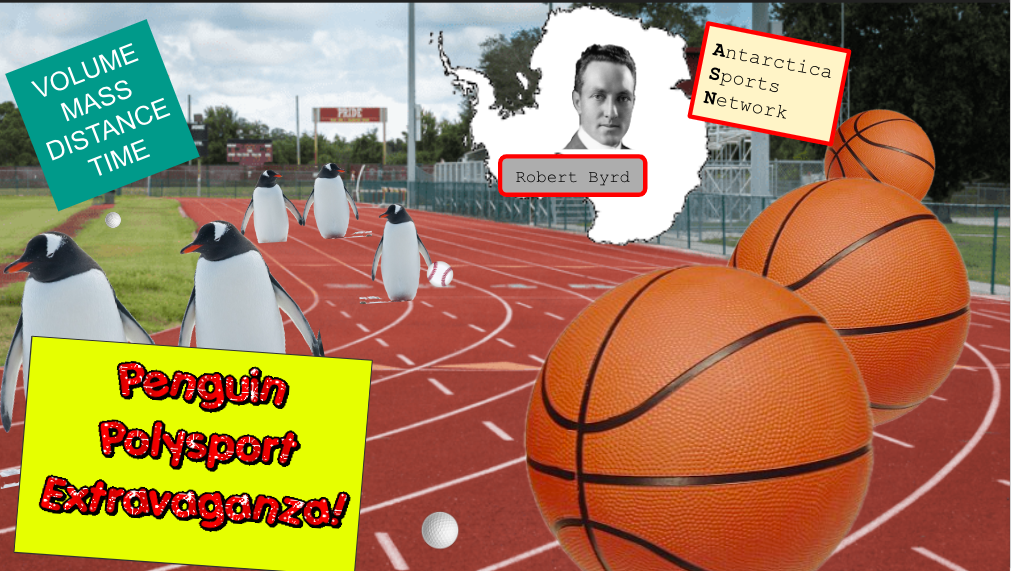On Measuring "Stuff" (part 2)
Mass, Volume, and Time ("Oh My!")
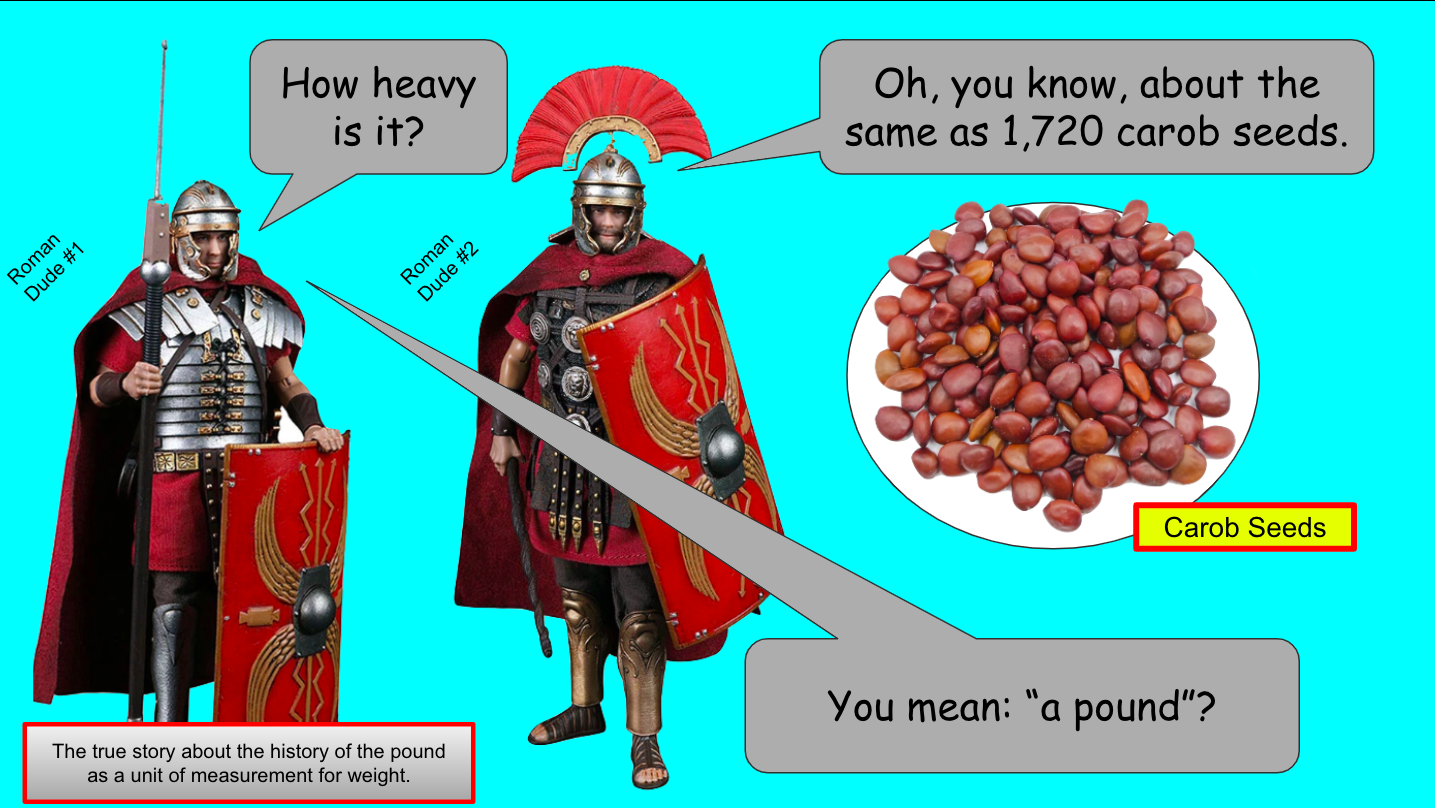
Measurement is the act of comparing one thing to another. Metaphor. It is inescapable. The real question is: "to what shall we compare everything?"
Before the metric system (which is the backbone of the Système International d'Unités [SI]), there were many differences in how human beings chose to compare. But it was annoying and confusing. Examples of confusing and annoying aspects of the Imperial System:
- Ounces can refer to mass or volume
- Pounds can refer to mass or money
- Incoherent and random conversion rates
- 12 inch to a foot, 3 feet to a yard, 1760 yards in a mile
- 16 ounces in a pound; 2000 pounds in a ton
- 128 ounces in a gallon
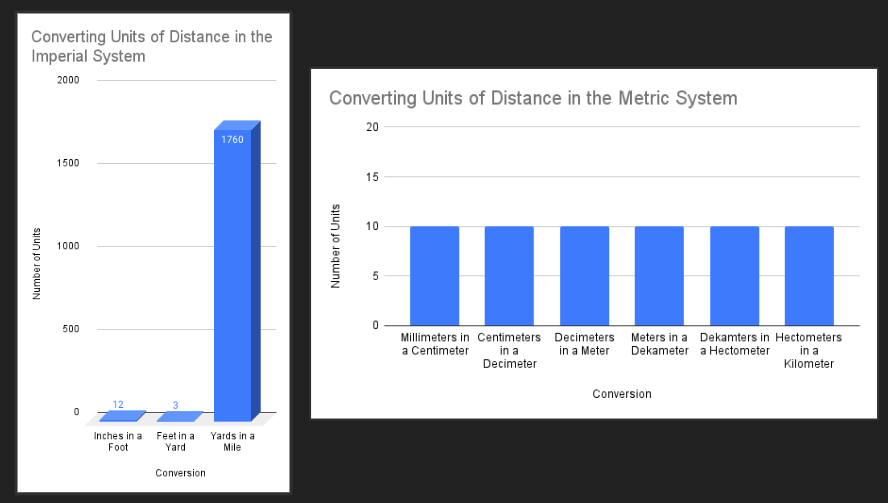
One nice aspect about the metric system was that it did away with all these crazy conversion rates. Everything was based on TEN (10), which happens to be the normal number of fingers that we humans possess. Instead of all these crazy units for mass ("this many grains in an ounce, this many ounces in a pound, and this many pounds in a ton"), there was one unit: the gram.
The real trick is remembering what all the prefixes mean.
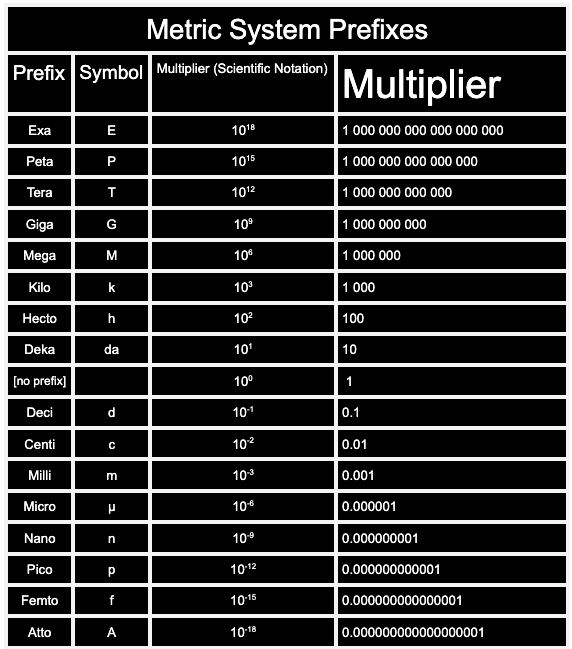
After deciding that the meter was to be [roughly] one-tenMillionth of the distance from the equator to the north pole (through Paris, France), scientists started connecting other measurements to it.
For example, it was decided that the unit of measurement for volume (or "capacity") would be the space taken up by a cube with edges exactly 1 decimeter in length (0.1 meters). They called this unit: the liter.
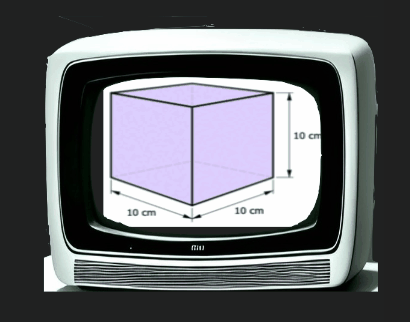
Furthermore, it was decided that the unit of measurement for mass would be the gram. What was the mass of a gram? The same mass as 1 cubic centimeter (AKA a milliter) of pure H2O.
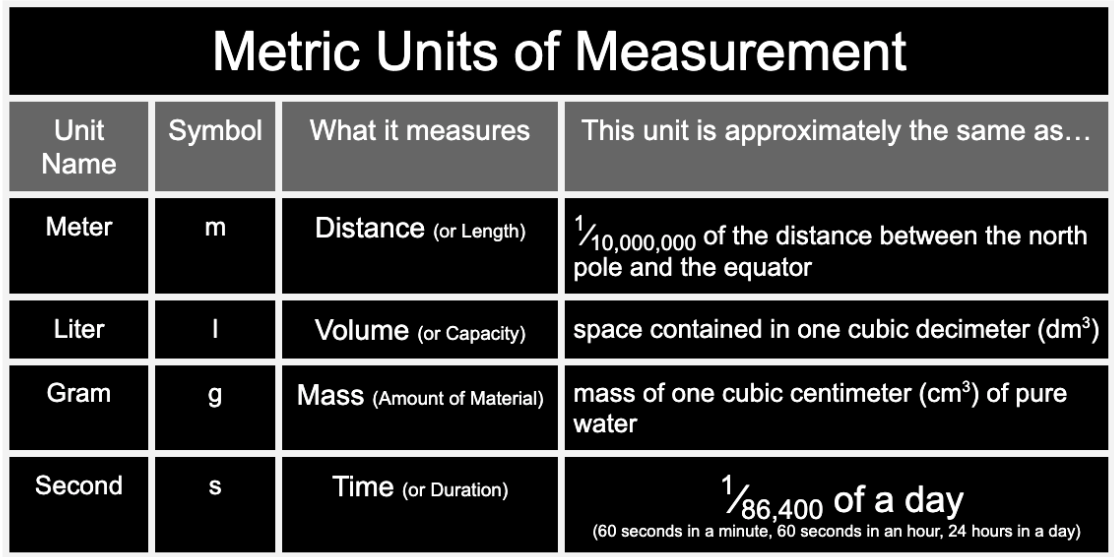
Thanks to King Leroy, sovereign monarch over the Antarctic continent, Robert Byrd was able to educate the penguin masses about the concept of masses. And distance. And volume. And time.
And in celebration, Robert Byrd organized an polysports extravaganza, where penguins "ran" races of different distances (100 meters, 400 meters, & 1 kilometer), penguins of different masses (1 kilogram, 10 kilogram, & 40 kilograms) competed in greco-roman wrestling, and penguins threw different spherical objects of varying volume (40 ml, 220 ml, and 7,000 ml).
